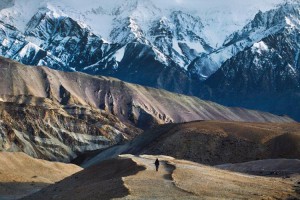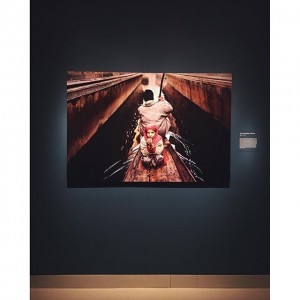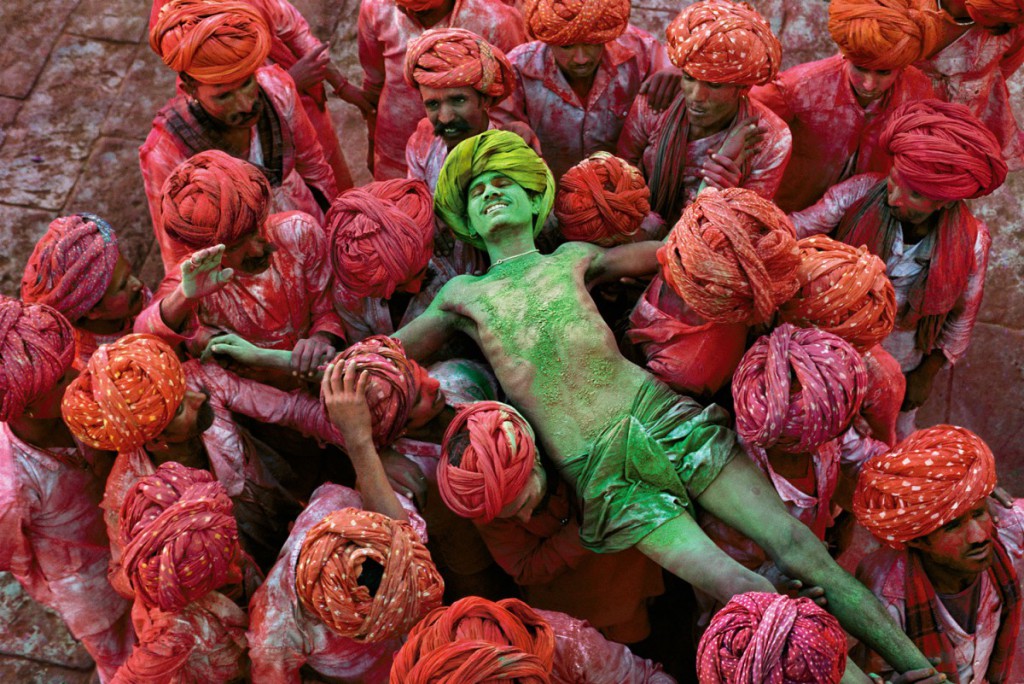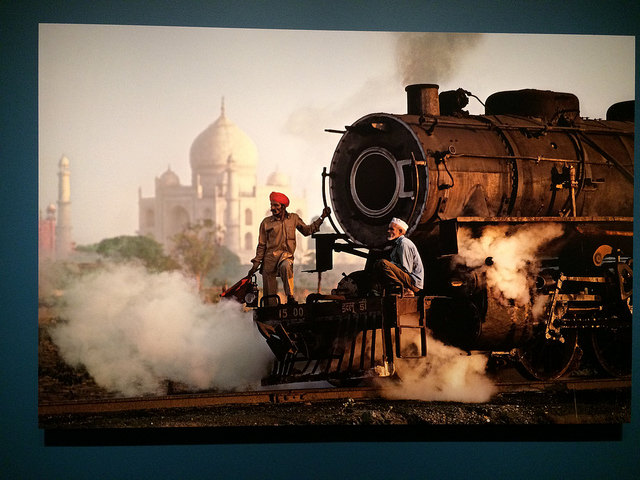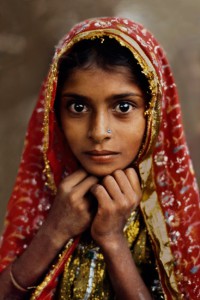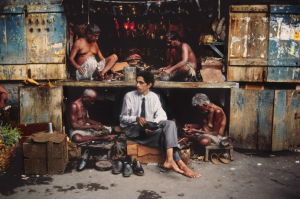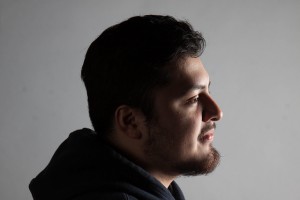The Exhibit of Steve McCurry was a very different experience from many of the other exhibits I have every been to. For starters the exhibit itself was not lit very bright at all but the pictures on the walls had light, highlighting them from the background. This is a technique I have never seen before, but it is very effective since many of the photos were very colorful and the that light made each photo pop out even more. Also I found very interesting that the walls of the exhibit was a dark like blue which again I have never seen in any exhibit before. Examining the exhibit, you can see many of the photos there are portrait like photos, but with some type of twist to it. His photos seem to having a much deeper meaning then a well shot photo. I think there were about 15 -20 Photos in the exhibit showing different ways that India could be seen in.
In the Exhibit you see various different parts of India during different times of the day. In some photos Steve McCurry shows the passion in there culture. You see that many of the women and men are in traditional clothing and also parts of India that are important. For example Steve McCurry has about two photos that showcases a festival of colors. This festival consist of colored powder being thrown all about. In one of the photos you see a bunch of people colored in red powder while holding up a man covered in green powder. Just from the man in green expression, you can see he is in a state of pure bliss and he is greatly enjoying himself. Now if you compare this photo to the other photo Steve McCurry took, the feel of the photo is varied. The other photo is a portrait of a man covered in different powders. In this photo the man has doesn’t have much of an expression to show, but all the colors on him make it seem as if the colors represent something like some type of peace or youthfulness even as a grown adult. What I find very interesting is the fact that prior to this exhibit India has been portrayed as a poor country in need of help. India is seen as less advanced, poor and kind of a place you would not want to live in. I do not think in even one photo Steve McCurry has ever shown that India is a bad place to in and quite frankly I think Steve McCurry has done the exact opposite off that. He shows the beauty of the people in India in their natural environment and does not overlook the small details when it comes to taking that perfect photo.
I think my favorite photo that Steve McCurry took was the one with two men that were on board of a very old railway train passing the Taj Mahal. This photo is very appealing for many reason. For starters the photo itself has a very strong use of shadows on both the people and train. The man on the left of the photo is in shade while the man next to him is in complete sunlight. Even on the train you can see a high contrast of shadow and highlights from looking at the front of the train compared to the side of it. Also in this photo you can see the Taj Mahal in the background. I find it interesting that the rusting train is seen to be much more important than a monument that in some ways defines India. The way I see it is the old train coming back to its old glory since back when rail trains first come about, they were very popular and was a huge achivement during industrial times. This train itself use to be what many would come to see and I find it interesting that both the train and Taj Mahal are next to each other showing what was amazing back then vs what is amazing now.
I think the photo with the Afghan girl became so iconic because of the time period and what this photo both represents and what it portrays. During the time this photo was taken Afghan was not the best of places to be in at the time because of the war going on and the fear of communism. People are paranoid and afraid and fear losing their lives. This photo of the Afghan girl Sharbat Gula has a very distinct feel to it. Gula has a mixer of expressions in her face. Her face looks very intense and is looking directly at you making it very personally. Her eyes strike you very harshly and she looks as if she has been hurt and had her fair share of hardships, but yet in spite of that she will carry on to survive. She looks frail yet determined and does not seem that she will back down. Her beautiful green eyes are very distinct and unique and she has a gaze that you will never forget. This girl looks like she has not given up even in her situation and is not afraid to stand up and fight.


